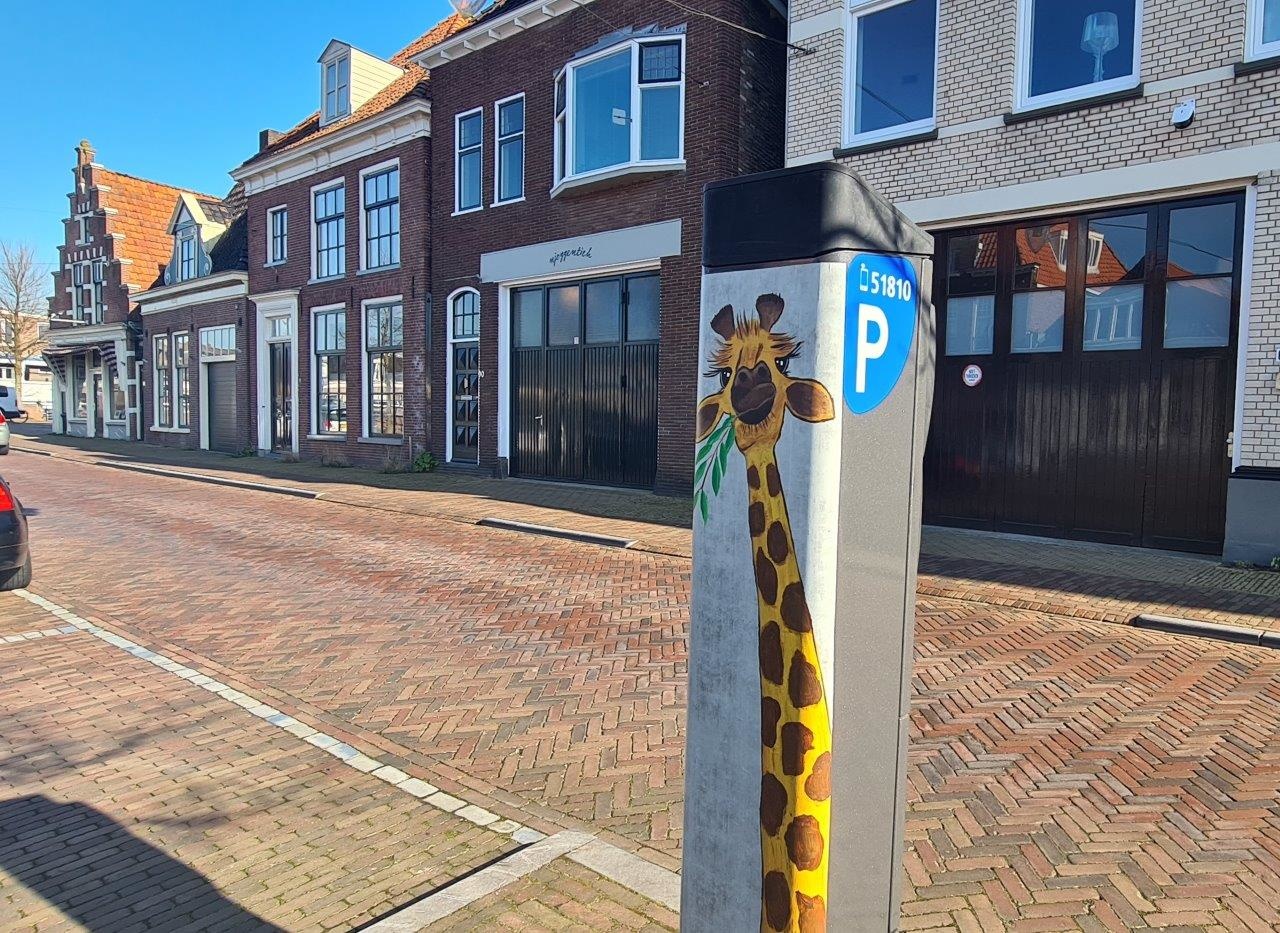
Streetart, Guus Giraffe
Guus Giraffe
Giraffes (Giraffa) are a genus of even-toed mammals found in Africa. They are known for their long necks and the spotting pattern on their fur. Together with their closest relative, the much smaller okapi, which has a chestnut brown body, striped legs and a spotted head, giraffes form the family Giraffidae. A giraffe's fur is a distinctive feature. The fur has irregular, dark spots that are orange, maroon, brown or almost black. They are separated by light hair (usually white or cream in color). The skin under the dark areas, especially the spots, may serve for thermoregulation, also being a convenient location for blood vessels and large sweat glands. The giraffe's skin is usually grayish. The skin is also thick and allows them to run through a thorn bush without sustaining any injuries. The fur can also serve as a chemical defense, as it is full of parasite and insect repellents that give the animal a characteristic smell
The skeleton of a giraffe has the same composition as that of a human. Like a human, a giraffe's number of vertebrae can sometimes differ. A human has about 34 vertebrae, while a giraffe has 44 to 54. This is because a giraffe has a tail with about 17 tail vertebrae. A giraffe has the same number of cervical vertebrae as a human, which is 7, only they are much longer.
Kleinzand
The Kleinzand is a quay and canal in the inner city of Sneek. The name is a corruption of the word zaan or sont, which is a narrow passage between wider waters. Unlike the Grootzand, the moat on the Kleinzand was still navigable.